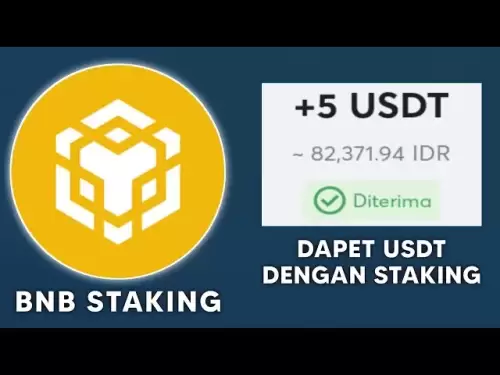-
 Bitcoin
Bitcoin $105,290.4279
4.46% -
 Ethereum
Ethereum $2,407.4233
7.73% -
 Tether USDt
Tether USDt $1.0007
0.02% -
 XRP
XRP $2.1509
6.51% -
 BNB
BNB $640.4754
3.91% -
 Solana
Solana $143.8519
8.64% -
 USDC
USDC $0.9999
0.01% -
 TRON
TRON $0.2735
3.64% -
 Dogecoin
Dogecoin $0.1631
7.35% -
 Cardano
Cardano $0.5811
7.21% -
 Hyperliquid
Hyperliquid $37.4173
5.54% -
 Sui
Sui $2.7951
13.59% -
 Bitcoin Cash
Bitcoin Cash $462.0755
1.75% -
 Chainlink
Chainlink $12.8780
10.17% -
 UNUS SED LEO
UNUS SED LEO $9.1321
1.18% -
 Stellar
Stellar $0.2454
7.05% -
 Avalanche
Avalanche $18.0314
8.62% -
 Toncoin
Toncoin $2.9114
6.55% -
 Shiba Inu
Shiba Inu $0.0...01158
9.05% -
 Litecoin
Litecoin $85.0039
5.42% -
 Hedera
Hedera $0.1519
12.92% -
 Monero
Monero $312.0572
4.18% -
 Ethena USDe
Ethena USDe $1.0007
0.03% -
 Polkadot
Polkadot $3.4168
8.50% -
 Dai
Dai $1.0000
0.00% -
 Bitget Token
Bitget Token $4.1980
4.14% -
 Uniswap
Uniswap $6.8088
8.09% -
 Pepe
Pepe $0.0...09871
10.93% -
 Pi
Pi $0.5340
3.78% -
 Aave
Aave $255.3245
11.87%
cheap way to send usdt
Sending USDT cheaply involves trade-offs; P2P offers low fees but higher risk, while exchanges provide security but may charge more. Choosing the right blockchain (e.g., TRON) and minimizing network fees are crucial for cost-effective transfers.
Mar 23, 2025 at 03:07 am
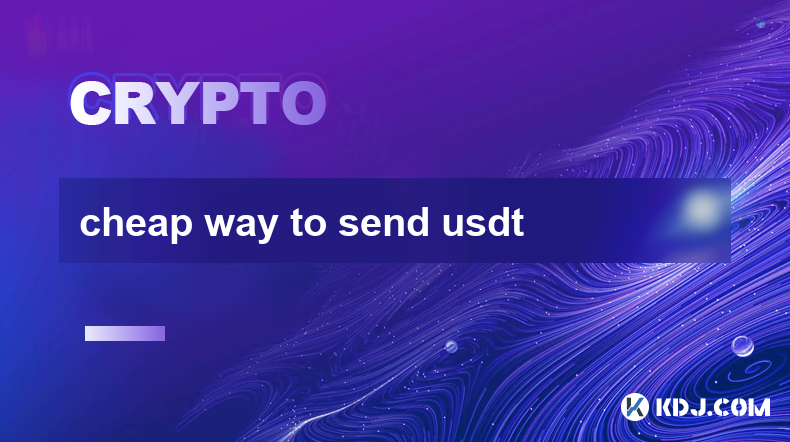
Key Points:
- Several cost-effective methods exist for sending USDT, each with trade-offs in speed and security.
- Peer-to-peer (P2P) exchanges often offer the cheapest options but involve higher risk.
- Utilizing exchanges with low fees is crucial for minimizing transaction costs.
- Understanding network fees (gas fees on Ethereum) is vital for budgeting your transfer.
- Choosing the right blockchain (e.g., TRON, Omni) can significantly impact the cost.
Cheap Ways to Send USDT
Sending USDT, a popular stablecoin pegged to the US dollar, doesn't have to break the bank. However, the "cheapest" method depends heavily on your priorities: speed versus cost, security versus convenience. Let's explore some options.
1. Peer-to-Peer (P2P) Exchanges: P2P platforms like LocalBitcoins or Paxful connect buyers and sellers directly. They often boast the lowest fees because they cut out intermediaries. However, they carry a higher risk of scams or fraudulent activity. Thorough due diligence, including checking seller reputation and using escrow services, is crucial.
2. Cryptocurrency Exchanges with Low Fees: Many exchanges offer USDT trading and withdrawals. Compare their fee structures carefully. Some charge a percentage of the transaction amount, while others have fixed fees. Look for exchanges known for competitive pricing and a robust security track record. Binance, Kraken, and KuCoin are examples, but their fees can fluctuate. Always check their current fee schedule before sending.
3. Choosing the Right Blockchain: USDT exists on multiple blockchains like Ethereum (ERC-20), TRON (TRC-20), and Omni. Transaction fees vary dramatically between these. TRC-20 USDT typically has significantly lower fees than ERC-20 USDT due to the difference in network congestion and transaction processing mechanisms. Be sure to select the correct network when sending to avoid delays or extra charges. Confirm the recipient's address is compatible with your chosen blockchain.
4. Minimizing Network Fees (Gas Fees): When sending USDT on Ethereum (ERC-20), you'll encounter "gas fees." These are fees paid to miners to process your transaction. Gas fees are dynamic and depend on network congestion. Sending during periods of low network activity can drastically reduce these costs. Tools and resources are available to estimate gas fees before you confirm your transaction.
5. Batching Transactions: If you need to send multiple smaller amounts of USDT, consider combining them into a single larger transaction. This can often be more cost-effective than sending many individual transactions, especially with higher gas fees on networks like Ethereum. This is particularly relevant when dealing with smaller amounts of USDT.
6. Utilizing a Decentralized Exchange (DEX): DEXs like Uniswap or PancakeSwap can offer lower fees compared to centralized exchanges, but they might require a more technical understanding of decentralized finance (DeFi) and can be slower. The lower fees are often offset by the increased complexity and potential for higher slippage.
Understanding the nuances of each method:
- Speed: P2P transfers can be relatively fast, depending on the seller's responsiveness. Exchanges usually offer faster processing times compared to P2P but this is subject to the specific exchange and their processing capabilities. Blockchain network congestion also impacts transaction speed.
- Security: Exchanges generally provide higher security compared to P2P, but they are not without risk. Always use strong passwords and enable two-factor authentication (2FA). P2P transactions necessitate extra caution to mitigate the risk of scams.
- Fees: P2P often boasts the lowest fees, but exchange fees are generally predictable and transparent. Network fees (gas fees) are unpredictable and highly dependent on network congestion.
Common Questions and Answers:
Q: What is the absolute cheapest way to send USDT?
A: There's no single "cheapest" method. P2P exchanges potentially offer the lowest fees, but the increased risk of scams must be weighed against the cost savings. The cheapest option will depend on current network conditions, exchange fees, and the chosen blockchain.
Q: How can I avoid high gas fees when sending ERC-20 USDT?
A: Send during periods of low network activity, use a gas fee estimator to optimize your transaction cost, and consider batching transactions to reduce the overall cost.
Q: Is it safer to send USDT through an exchange or P2P?
A: Exchanges generally offer better security features and protections, but they still carry inherent risks. P2P platforms carry a significantly higher risk of fraud and scams if not handled with extreme caution.
Q: Which blockchain is best for cheap USDT transfers?
A: TRON (TRC-20) generally has the lowest transaction fees compared to Ethereum (ERC-20) and Omni. However, the choice depends on the recipient's address and compatibility.
Q: What are the hidden costs associated with sending USDT?
A: Hidden costs can include unexpected network fees (gas fees), exchange withdrawal fees that may not be clearly advertised upfront, and potential losses due to scams on P2P platforms. Always check the complete fee structure before initiating a transfer.
Disclaimer:info@kdj.com
The information provided is not trading advice. kdj.com does not assume any responsibility for any investments made based on the information provided in this article. Cryptocurrencies are highly volatile and it is highly recommended that you invest with caution after thorough research!
If you believe that the content used on this website infringes your copyright, please contact us immediately (info@kdj.com) and we will delete it promptly.
- Bitcoin's Bullish Consolidation: LTH Confidence Shines Through On-Chain Data
- 2025-06-24 08:25:12
- WIF Price Check: Weekly Demand, Bounce or Breakdown?
- 2025-06-24 08:25:12
- Solana, Iran-Israel, and Crypto Sentiment: Navigating Uncertainty
- 2025-06-24 08:45:12
- Trump Media, Bitcoin Treasury, and Stock Buybacks: A Wild Ride on Wall Street
- 2025-06-24 08:45:12
- MAS, Digital Tokens, and Regulations: Navigating Singapore's Evolving Landscape
- 2025-06-24 08:50:12
- SpaceX, Crypto Networks, and Quantum-Safe Tech: A New Orbit?
- 2025-06-24 08:50:12
Related knowledge
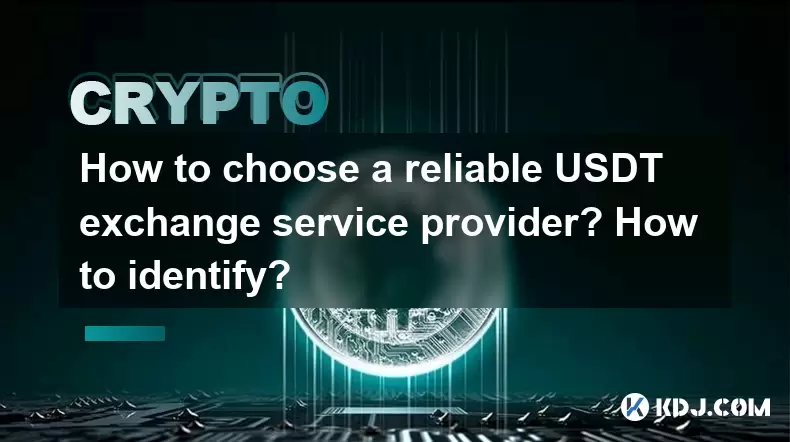
How to choose a reliable USDT exchange service provider? How to identify?
Jun 12,2025 at 03:15pm
Understanding the Role of USDT in Cryptocurrency TradingUSDT (Tether) is one of the most widely used stablecoins in the cryptocurrency market. It is designed to maintain a 1:1 peg with the U.S. dollar, offering traders and investors a way to hedge against volatility while remaining within the crypto ecosystem. Choosing a reliable USDT exchange service p...
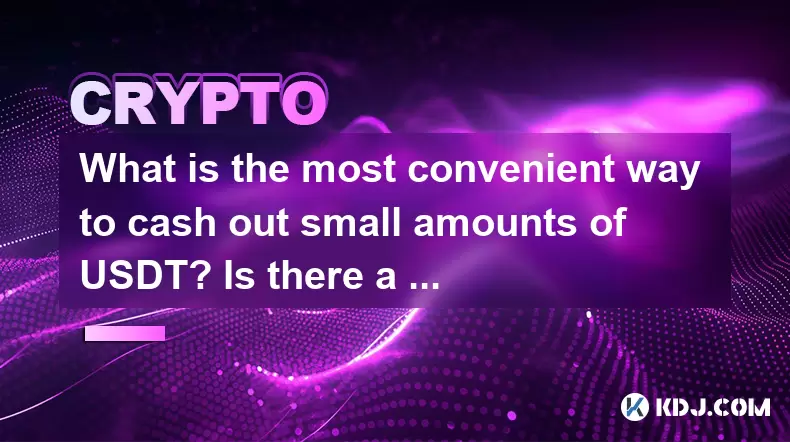
What is the most convenient way to cash out small amounts of USDT? Is there a shortcut?
Jun 11,2025 at 11:00pm
Understanding the Need to Cash Out Small USDT AmountsCashing out small amounts of USDT can be a challenge for many crypto users. Traditional methods often involve high fees, minimum withdrawal limits, or cumbersome verification processes that make it inefficient for small transactions. The key is to find a method that balances speed, cost, and convenien...
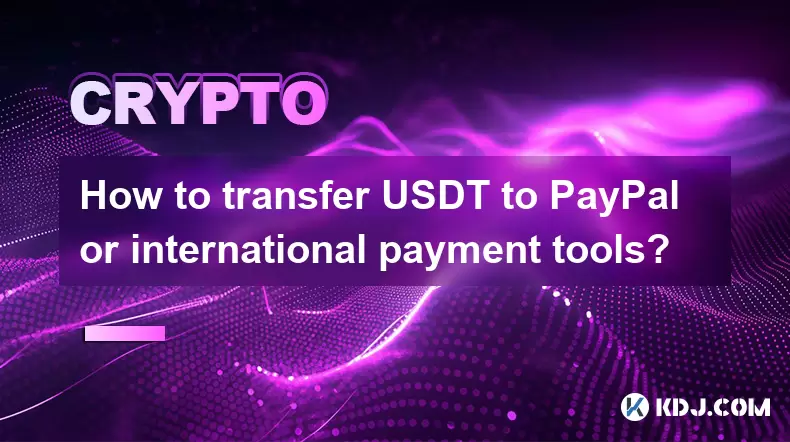
How to transfer USDT to PayPal or international payment tools?
Jun 15,2025 at 05:28am
Understanding the Basics of USDT and PayPal IntegrationUSDT (Tether) is a stablecoin pegged to the US dollar, offering blockchain-based value transfer with minimal volatility. PayPal, on the other hand, is a centralized digital wallet that facilitates fiat currency transactions globally. Direct integration between USDT and PayPal does not exist due to t...
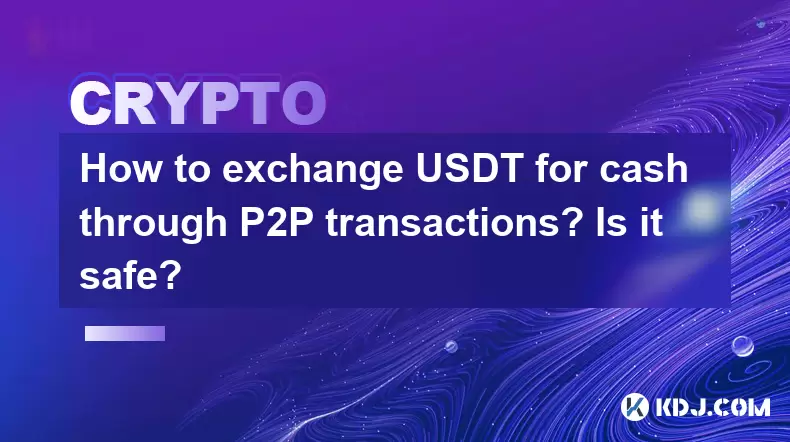
How to exchange USDT for cash through P2P transactions? Is it safe?
Jun 18,2025 at 07:56am
Understanding USDT and P2P TransactionsTether (USDT) is a stablecoin pegged to the value of the US dollar, making it a popular choice for users who want to avoid the volatility of other cryptocurrencies while still participating in the crypto ecosystem. Peer-to-peer (P2P) transactions allow individuals to trade directly with each other without going thr...
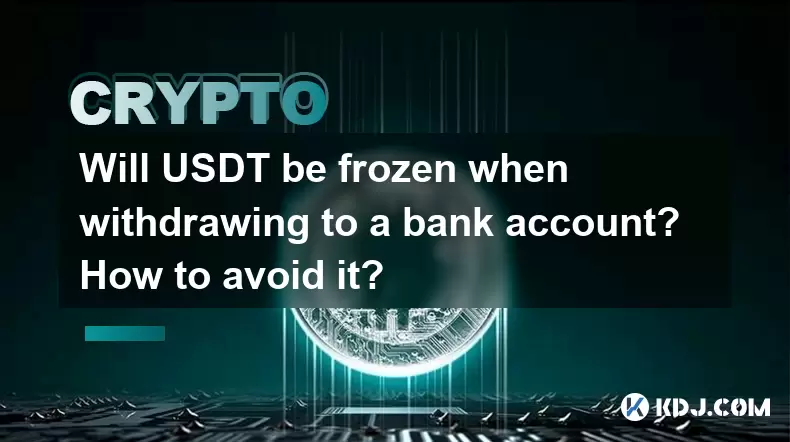
Will USDT be frozen when withdrawing to a bank account? How to avoid it?
Jun 15,2025 at 10:03am
Understanding USDT Withdrawals and Bank Account Freezing RisksWhen users decide to withdraw USDT (Tether) to a bank account, one of the most common concerns is whether their funds will be frozen during the process. This concern stems from real-life cases where individuals have encountered delays or restrictions when converting digital assets into fiat c...

How to avoid risks when exchanging USDT for cash? What are the pitfalls?
Jun 11,2025 at 08:14pm
Understanding the Risks of Exchanging USDT for CashWhen exchanging USDT (Tether) for cash, users must be aware of the potential risks involved. As a stablecoin pegged to the US dollar, USDT is widely used in crypto transactions due to its price stability. However, converting it into fiat currency like USD or CNY can expose users to several pitfalls, inc...

How to choose a reliable USDT exchange service provider? How to identify?
Jun 12,2025 at 03:15pm
Understanding the Role of USDT in Cryptocurrency TradingUSDT (Tether) is one of the most widely used stablecoins in the cryptocurrency market. It is designed to maintain a 1:1 peg with the U.S. dollar, offering traders and investors a way to hedge against volatility while remaining within the crypto ecosystem. Choosing a reliable USDT exchange service p...

What is the most convenient way to cash out small amounts of USDT? Is there a shortcut?
Jun 11,2025 at 11:00pm
Understanding the Need to Cash Out Small USDT AmountsCashing out small amounts of USDT can be a challenge for many crypto users. Traditional methods often involve high fees, minimum withdrawal limits, or cumbersome verification processes that make it inefficient for small transactions. The key is to find a method that balances speed, cost, and convenien...

How to transfer USDT to PayPal or international payment tools?
Jun 15,2025 at 05:28am
Understanding the Basics of USDT and PayPal IntegrationUSDT (Tether) is a stablecoin pegged to the US dollar, offering blockchain-based value transfer with minimal volatility. PayPal, on the other hand, is a centralized digital wallet that facilitates fiat currency transactions globally. Direct integration between USDT and PayPal does not exist due to t...

How to exchange USDT for cash through P2P transactions? Is it safe?
Jun 18,2025 at 07:56am
Understanding USDT and P2P TransactionsTether (USDT) is a stablecoin pegged to the value of the US dollar, making it a popular choice for users who want to avoid the volatility of other cryptocurrencies while still participating in the crypto ecosystem. Peer-to-peer (P2P) transactions allow individuals to trade directly with each other without going thr...

Will USDT be frozen when withdrawing to a bank account? How to avoid it?
Jun 15,2025 at 10:03am
Understanding USDT Withdrawals and Bank Account Freezing RisksWhen users decide to withdraw USDT (Tether) to a bank account, one of the most common concerns is whether their funds will be frozen during the process. This concern stems from real-life cases where individuals have encountered delays or restrictions when converting digital assets into fiat c...

How to avoid risks when exchanging USDT for cash? What are the pitfalls?
Jun 11,2025 at 08:14pm
Understanding the Risks of Exchanging USDT for CashWhen exchanging USDT (Tether) for cash, users must be aware of the potential risks involved. As a stablecoin pegged to the US dollar, USDT is widely used in crypto transactions due to its price stability. However, converting it into fiat currency like USD or CNY can expose users to several pitfalls, inc...
See all articles






















